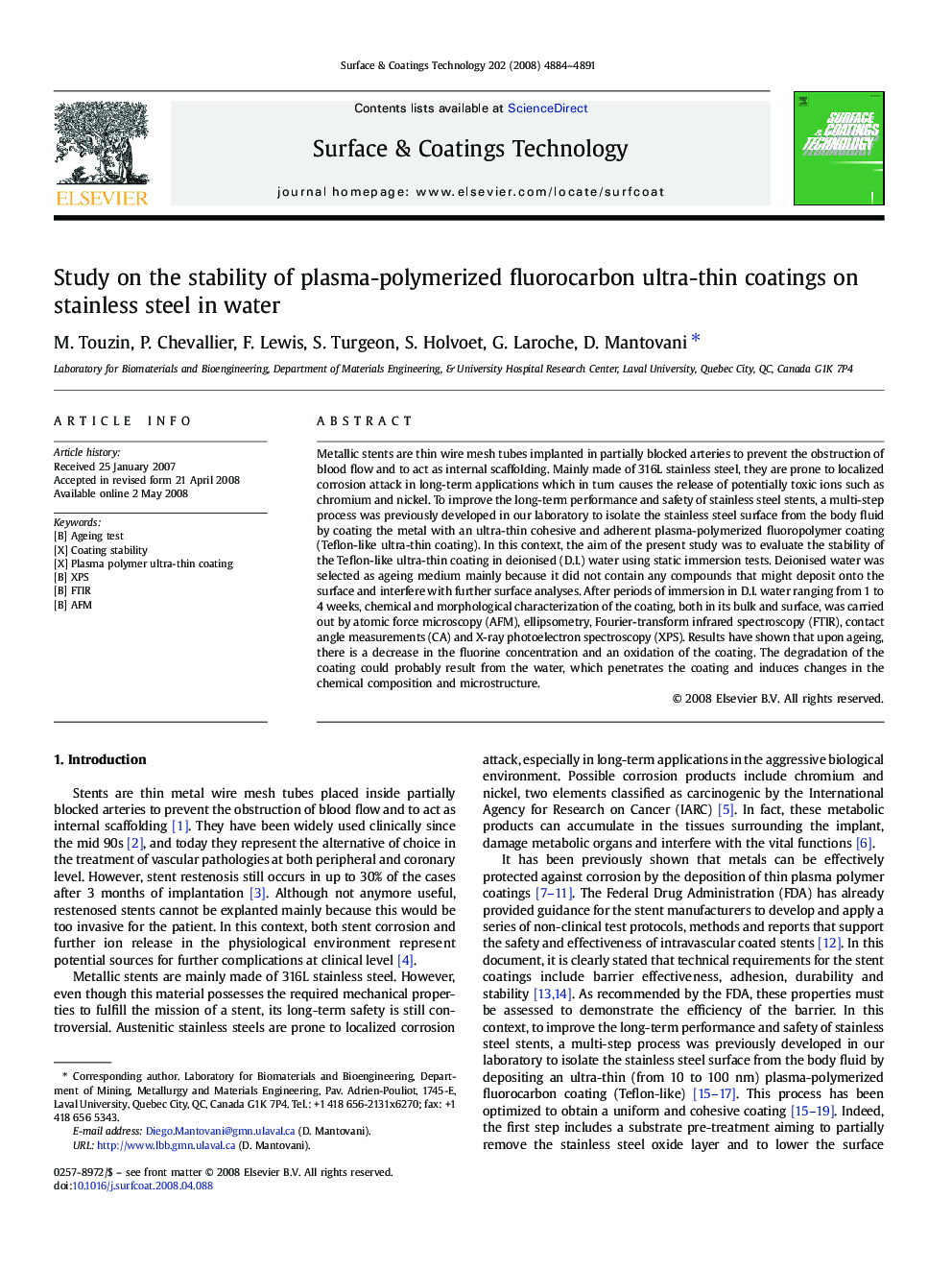| Article ID | Journal | Published Year | Pages | File Type |
|---|---|---|---|---|
| 1660653 | Surface and Coatings Technology | 2008 | 8 Pages |
Metallic stents are thin wire mesh tubes implanted in partially blocked arteries to prevent the obstruction of blood flow and to act as internal scaffolding. Mainly made of 316L stainless steel, they are prone to localized corrosion attack in long-term applications which in turn causes the release of potentially toxic ions such as chromium and nickel. To improve the long-term performance and safety of stainless steel stents, a multi-step process was previously developed in our laboratory to isolate the stainless steel surface from the body fluid by coating the metal with an ultra-thin cohesive and adherent plasma-polymerized fluoropolymer coating (Teflon-like ultra-thin coating). In this context, the aim of the present study was to evaluate the stability of the Teflon-like ultra-thin coating in deionised (D.I.) water using static immersion tests. Deionised water was selected as ageing medium mainly because it did not contain any compounds that might deposit onto the surface and interfere with further surface analyses. After periods of immersion in D.I. water ranging from 1 to 4 weeks, chemical and morphological characterization of the coating, both in its bulk and surface, was carried out by atomic force microscopy (AFM), ellipsometry, Fourier-transform infrared spectroscopy (FTIR), contact angle measurements (CA) and X-ray photoelectron spectroscopy (XPS). Results have shown that upon ageing, there is a decrease in the fluorine concentration and an oxidation of the coating. The degradation of the coating could probably result from the water, which penetrates the coating and induces changes in the chemical composition and microstructure.
